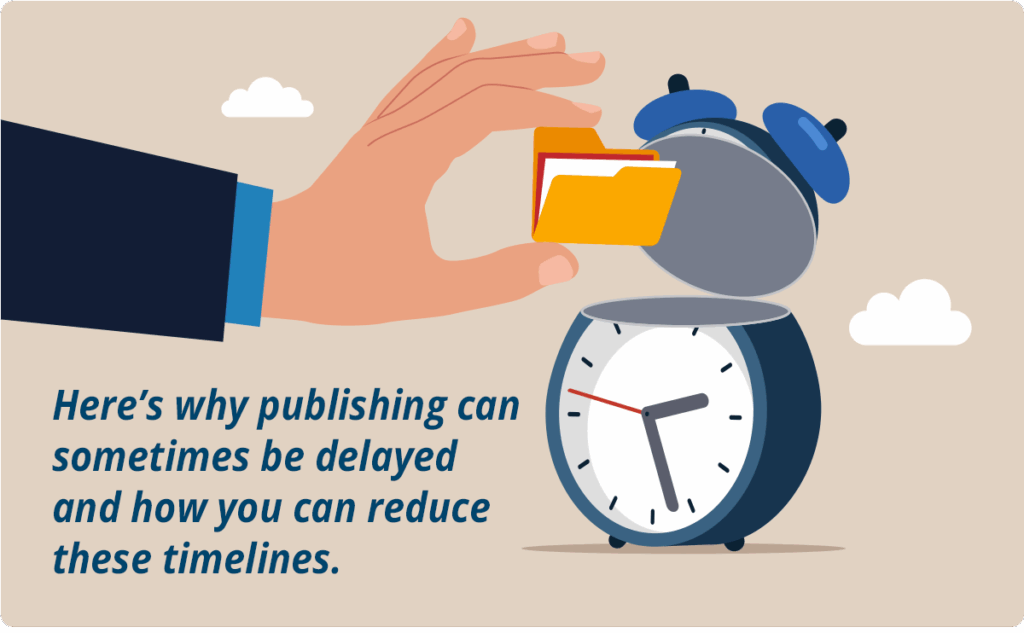
Regulatory teams know the feeling: your documentation is complete, the submission plan is sent, and yet, you’re still waiting days for your submission to be ready for review. With regulatory deadlines approaching, any delay feels amplified, especially when publishing timelines feel unusually long.
Here’s why publishing timelines can slip, and what you can do to get ahead of them.

Workload: Publishing workload comes in waves, periods of intense activity followed by quieter spells. Proper planning and tracking will mitigate the risk of submission deadlines being missed. Transparent communication around submission due dates is essential to allow publishers to manage priorities effectively.

Server Queues: Having the right server infrastructure, scaled to match your organization’s needs, is critical for optimizing publishing performance. Ensure that users’ counts and activities are accurately reported to your solution providers, so they can estimate infrastructure needs appropriately. Without this, slowdowns in performance are likely during peak times.

Document Availability and Quality: While it’s best practice to deliver dossier sections to publishers as they become available, even small submissions may require time-consuming checksum recalculations. If documents aren’t checked for submission readiness, then validation will fail, and republishing becomes necessary. Proper document workflows should be established to ensure that the documents are of the highest quality before being handed off to publishing teams.

Hyperlinking: Hyperlinking is powerful—but easily overused. Over-linking increases publishing time and introduces a higher risk of broken links. Module 3, due to its structured nature, often doesn’t need excessive links. One external reference per page is usually sufficient. Also, ensuring your hyperlinking tool is integrated into your publishing system can greatly streamline the process.

Timing: Global publishing teams often work across time zones, and system performance can suffer at key overlapping hours. For instance, as a UK-based publisher, I try to finalize submissions in the morning, before US-based teams come online, which typically impacts performance. Work with your tool vendors to understand and address timing bottlenecks.

External Reviewing Tools: External review tools can be helpful during outages, but they add friction to everyday publishing workflows. When using a third-party viewer, files often need to be manually transferred to a shared drive, then synced or, more likely, will be manually loaded after a request. This extra step can take a long time, with transferring submissions via VPN across drives on occasion taking longer than publishing the submission itself. Integrated review tools significantly reduce this delay, enabling quicker and more thorough reviews.
By understanding the common causes of publishing delays, and taking proactive steps to address them, you can streamline submission timelines, reduce stress, and improve collaboration across teams. Small changes in planning, tooling, and communication can make a significant impact on your publishing efficiency.


